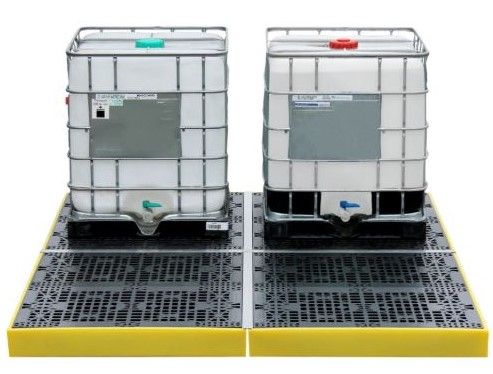The Importance of COSHH Assessments
The Control of Substances Hazardous to Health (COSHH) Act oversees occupational health and safety involving hazardous substances. While the name ‘COSHH’ is well known in many industries, it is often unclear who is legally responsible for implementing and complying with COSHH regulations on a day-to-day basis.
The delegated responsibility can be especially unclear when employees work off-site, or if an employee fails to follow control measures in place. As such, it is critical that all those involved in working with hazardous substances understand their duties and responsibilities in order to remain COSHH-compliant.
What are the three steps an employer can take to create a safe workplace?
There are three key steps employers can use to ensure they remain COSHH-compliant. The first is to avoid health dangers. This is a wide obligation, and there are several methods to carry it out. These include developing control measures and setting occupational exposure limits, all of which are covered under COSHH rules. The most suitable approach will depend on which substances a business uses and the specific risks these pose to workers.
The second step is to check that all machinery and equipment is safe to operate. When storing hazardous substances, for example, the storage facility must meet the relevant legal standards, and workers must follow the manufacturer's safety recommendations.
Finally, make certain that safe working procedures are introduced and enforced. This begins with the dissemination of appropriate and adequate knowledge on health rules and best practices for carrying out dangerous activities safely. This includes ensuring that personal protective equipment is used whenever it is required, and providing additional training where necessary.
Performing a COSHH risk assessment
A COSHH risk assessment seeks to highlight and determine the dangers and risks associated with the use and storage of hazardous chemicals in the workplace.
It is vital to remember that health risks are not only posed by harmful substances. Some dangerous materials, such as wood dust from sanding or silica dust from tile cutting, are common byproducts that are also governed by COSHH. See the substances covered by COSHH here.
Furthermore, spilled chemicals pose risks of slipping and falling. Such hazards should be dealt with immediately, thanks to appropriate COSHH spill control kits.
Determine the dangers
The first step in a COSHH risk assessment is to familiarise yourself with any hazardous substances present in your workplace. Begin by reading the product labels and safety data sheets (SDS) of any substance to determine whether they are hazardous. SDSs are provided by the manufacturer, and help you understand how the substance should be stored and handled. Visit our safety data sheets page for more information. If you are unsure about the safety sheets provided, contact the manufacturer or supplier before continuing with your assessment.
Determine who is at risk and how
A risk assessment should answer the question, “How could the employees be exposed to a health hazard?” Consider the way in which a substance could affect someone nearby - whether inhaled, absorbed via the skin, or ingested - and the effects of exposure via each of these ways. Many chemicals will be labelled to help you identify specific risks - they may be marked as irritants, for example.
Consider how frequently and for how long individuals will need to work with the substance.
Within your assessment, you must consider the risk posed to maintenance personnel, contractors, and other visitors or members of the general public who could be exposed.
Assess the dangers and choose precautions
After performing a risk assessment to determine which hazardous compounds are present and how employees might be injured, you must consider ways that you can avoid or minimise exposure.
After identifying that a substance poses a health risk, an important consideration is whether it is necessary to use that substance, or if there exists a safer alternative. Another consideration is whether or not work activity could be changed to remove or reduce the use of the substance. If it is not possible to change the activity or use different substances, the employer must put in place adequate control measures to reduce the risk of harmful exposure.
It is also important that a COSHH risk assessment covers other potential sources of harm, such as:
- Noise levels or vibrations from machinery
- Ergonomic issues
- Extreme temperatures
- Poor lighting
- Slippery floors or surfaces
- Unsuitable working posture
Every workplace has its own unique hazards, so it is important to make sure each one is identified and addressed appropriately.
Who is legally liable for workplace COSHH?
Maintaining compliance with COSHH at the workplace is the legal responsibility of the employer. The employer must guarantee that all work activities and equipment involving hazardous substances comply with COSHH laws.
The employer must implement active safety practices to increase employee safety and mitigate the risk of occupational injury and illness. When dealing with a hazardous substance, the employer has a duty of care towards their employees, and must use COSHH-compliant products that ensure the safe storage and use of hazardous substances in order to protect the employees.
An important aspect of instilling high levels of safety is COSHH-compliant storage. It must meet the specifications outlined by the hazardous substance’s manufacturer and the standards set by COSHH law. Finding appropriate COSHH storage will follow a thorough COSHH risk assessment of the workplace's storage capacities, and an evaluation of how the substances can be kept as safely as possible.
There are several best practices for storing dangerous compounds safely. Visit our COSHH cabinets page for the best solutions for the safe storage of hazardous chemicals.
 Over 12,000
Over 12,000  Simple no quibble
Simple no quibble  Prompt dispatch &
Prompt dispatch &  UK Mainland Delivery
UK Mainland Delivery 












